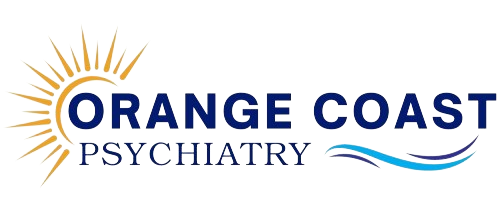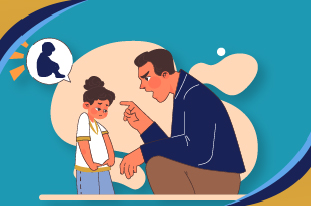The human heart is a complex system. It is a beautiful thing, capable of love and profound connection. Yet, sometimes, these capacities can become a web that leaves us feeling trapped and weakened.
If you have found yourself in a relationship that feels impossible to leave despite the pain it causes, you might be experiencing a trauma bond. While it can be a challenging situation, it’s important to remember that it’s not a permanent state. You possess the inherent strength to heal and reclaim your self-sense.
What Exactly Is a Trauma Bond—The Unnoticed Chains?
A trauma bond is like an unhealthy relationship that develops between an abuser and the abused. This is not like a typical unhealthy relationship where fights continue, and shouts and screams remain. It’s a profound, often unconscious, emotional attachment that develops in cycles of abuse, changing between intense highs and lows.
The abuser can be a romantic partner, a family member, or even a friend. Besides that, it can happen in the workplace or in a religious group, but we most commonly associate traumatic bonds with romantic associations.
A trauma bond develops from a psychological response to abuse, where the person (abused) begins to feel a bond or affection for the abuser.
Read More: Understanding Trauma Bond Withdrawal Symptoms: Moving on to building healthy relationships
Experts believe that unhealthy relationships produce these bonds. Humans naturally develop an attachment to those we perceive as our protectors, caregivers, comforters, or guides for survival. Just as children form a bond of love with their parents, as adults, we develop a similar attachment to those we perceive as comforters or caregivers. Occasionally, this happens so when we expect things to be normal again, like before.

Wuthering Heights’ Example To Better Understand The Trauma Bonding
Emily Brontë’s novel Wuthering Heights character, like Cathy, can be a better example to illustrate the romantic trauma bonding.
Her disturbed, often painful relationship with Heathcliff, despite the undeniable intensity, often leaves her in anguish. Although this is not truly a trauma bond in the clinical sense, the story shows deep emotional entanglement. Even after her significant suffering, it can become incredibly difficult for her to separate from this relationship.
This situation is not a reflection of weakness; rather, it stems from a deeply wired psychological response. The “bond” relationship forms because of an intermittent reinforcement schedule, where the periods of kindness, apologies, and affection are interspersed with periods of cruelty, manipulation, and neglect.
Your brain, in an attempt to protect you and make sense of the chaos, handles the “good” moments and always hopes that the last cherished and happy moments will come again.
Read More: The Hidden Mental Scars of Childhood Trauma in Adults
Biological Evidence of Oxytocin and Stress
Our bodies naturally crave connection, and this wiring surprisingly contributes to the formation of trauma bonds. One major player is oxytocin, called the “love hormone.” While oxytocin fosters bonding in healthy relationships, its release during stressful situations can deepen problematic attachments.
Research shows that oxytocin levels increase in response to various stressors. (Neumann et al., 2000; Onaka, 2004; Sanders et al., 1990).
The studies in humans show an increase in plasma oxytocin in women after their exposure to uncontrollable noises. (Sanders et al., 1990) And in response to several psychosocial stressors (Hoge et al., 2008; Marazziti et al., 2006; Taylor et al., 2010).
It is hypothesized that this oxytocin release during stress might serve to reduce physiological stress levels.
Indeed, high basal plasma oxytocin levels have been associated with lower norepinephrine levels, blood pressure, and heart rate.
In a trauma bond, this biological response can create a paradox, which means that a hormone that soothes you during stressful interactions can also strengthen your attachment to the source of that stress. Thus, it makes the bond incredibly resilient and difficult to sever.
Read More: What is Trauma Dumping and How to Stop It?
Recognizing the signs, whether it is a trauma bond or not?
The recognition and identification of a trauma bond is the first necessary step toward breaking free. Look for these identifications and signs.
- The relationship experiences dramatic highs and lows, characterized by moments of intense connection followed by devastating conflicts.
- Despite having significant pain, the abused never detaches from the relationship.
- The abused’s thoughts are controlled by the abuser when they are apart.
- Abusers find excuses for their actions and blame themselves.
- The person (abused) lost touch with their own needs, desires, and identity.
- The abuser isolates the other person from other societal connections, like friends, family, and relatives.
- The abused person tries to exit the relationship, yet they find themselves drawn back in.
- The abused feel guilt and shame for the relationship’s problems.

Actionable Steps To Break The Bond For Freedom
Breaking a trauma bond is a process, not a single event. It requires immense courage and self-compassion, along with consistent effort. Here are the steps to follow:
1. Acknowledge And Validate Your Experience.
The most powerful step is to name what’s happening. You must understand that you are not flawed for being in this situation, or that the present is not a mistake; the other person is treating you like this. This recognition empowers you to separate yourself from the blame. Trauma bonds are cunning; they exploit our fundamental human need for connection. As Dr. Nicole LePera, “The Holistic Psychologist,” often emphasizes, Self-awareness is the bedrock of lasting change.” Acknowledging the bond is your first step in self-love.
2. The Most Essential Step Is To Prioritize No Contact.
This is the second most important and challenging step to take. To break the cycle, you must cut off all communication with the abuser. This means
- Block numbers and social media links
- Avoid places where you might have to face them.
- Don’t respond to messages, emails, and calls.
- Inform mutual friends that you need space.
Think of this relationship as addiction. To heal, you must remove the addictive substance. Every interaction, even a seemingly safe one, reinforces the bond. This step might feel incredibly painful, like a withdrawal, but it is necessary for your healing.
Read More: Behavioral Health VS Mental Health: What is the Difference?
3. Find Professional Support
A therapist who specializes in trauma, narcissistic abuse, and complex PTSD can provide a valuable guide. They understand the signs of trauma bonding and suggest radical procedures of healing. They offer a safe space to process your emotions, understand the dynamics of the bond, and develop healthy coping mechanisms.
Cognitive behavioral therapy (CBT) and eye movement desensitization and reprocessing (EMDR) are two therapeutic modalities that can be particularly effective in processing trauma and reframing negative thought patterns. A qualified therapist can help you separate the irregular reinforcement cycle and re-establish your sense of self outside of the abuser’s influence.
Rebuild Your Village for an Internal Support System
Trauma bonds flourish in isolation. Reach out to trusted friends, family members, and supporters for support and rebuild your social circle. Share your thoughts with people, and have a strong network of supportive individuals who can provide emotional strength, practical help, and a sense of belonging. Your social activity encounters the isolation that is imposed by the trauma-bonded relation.
Rediscover Who You Are
When you are in a trauma bond, your identity often becomes trapped with the abuser. Take steps to rediscover your inner self, your passion, hobbies, and values.
- Engage yourself in activities you once loved.
- Discover new interests that engage your mind.
- Spend time writing journals and reading books.
- Practice mindfulness and self-compassion.
This process of self-discovery is required for rebuilding your self-esteem and establishing a strong sense of personal identity, which can help reduce the trauma bond symptoms.
Set Firm Boundaries to Protect Your Energy
In the healing process, you will learn how to establish and maintain healthy boundaries in all your relationships. This includes practicing saying “No” when your self-esteem is at risk, protecting your time and energy, and clearly communicating your needs.
Boundary setting is an act of self-respect and a fundamental component of a healthy relationship. It ensures that you are in control of your space and emotional well-being.
Be Kind to Yourself
Breaking a trauma bond is a hard struggle, which is filled with ups and downs. There will be moments of doubt, sadness, and perhaps even longing for that person. In all these times, practice thorough self-compassion. You should treat yourself with the same compassion and understanding you would offer to your loved ones. This includes:
- Accept your pain without judgment.
- Feel your emotions like happiness, joy, and other emotions.
- Busy yourself with self-care activities.
- Keep reminding yourself that your healing is a process, not a race.
Dr. Kristin Neff’s work on self-compassion provides a powerful framework for this practice, which emphasizes that self-kindness, common humanity, and mindfulness are necessary for navigating difficult experiences.
Read More: Online Psychiatrists Give The Same Care as In-House Psychiatrists
Get Yourself an Empowered Future
Breaking the trauma bond is a reflective act of self-liberation. Some people are not aware of how to break a trauma bond. This is essential for them to follow the steps. Liberty from trauma bonds requires huge courage and a willingness to face deep-seated emotional patterns.
But the reward for this practice is endless. You will find a renewed self-worth, genuine peace, and the capacity to build healthy, fulfilling relationships.
You can and will have it with professional support, an expert network, and steadfast self-compassion.
Orange Coast Psychiatry is the perfect place where you can find friends in the form of a psychiatrist who helps you break the invisible chains of a trauma bond. Your well-being is the absolute priority. Your freedom awaits.


















